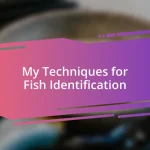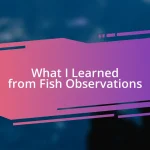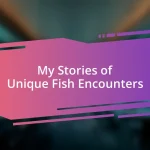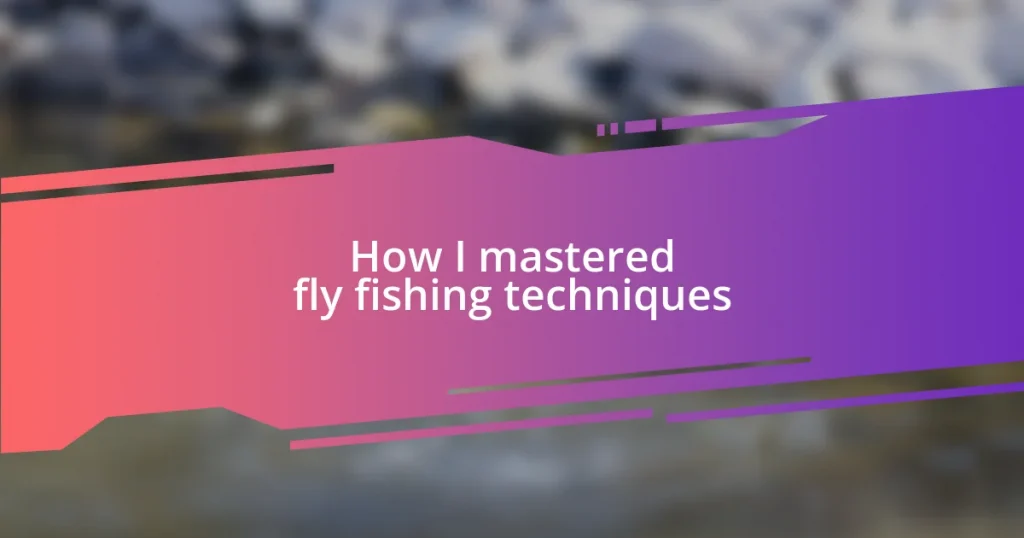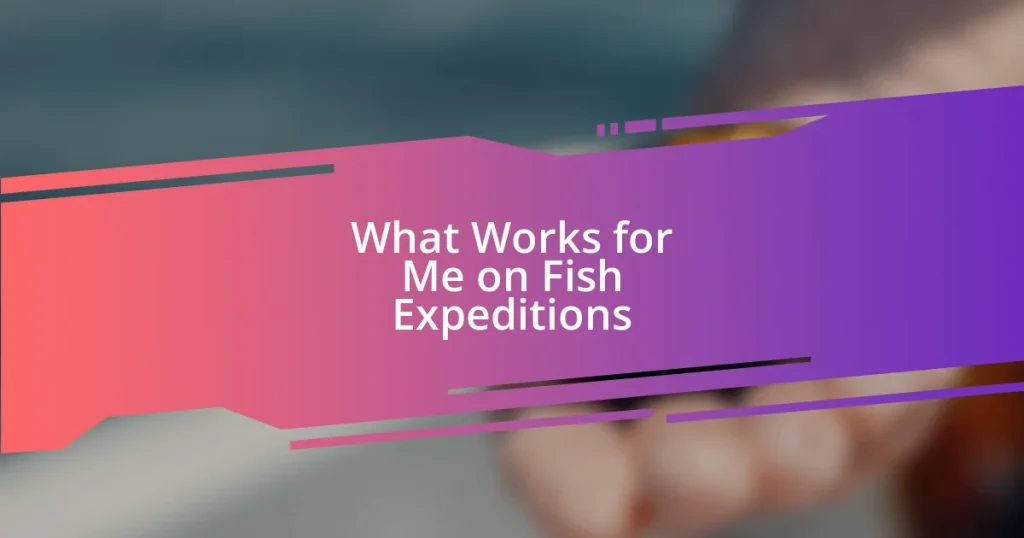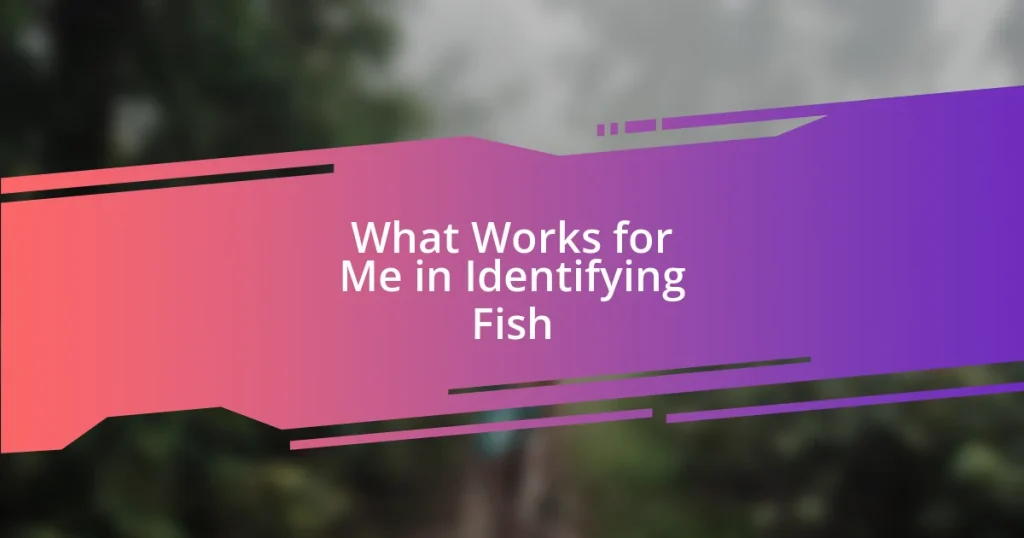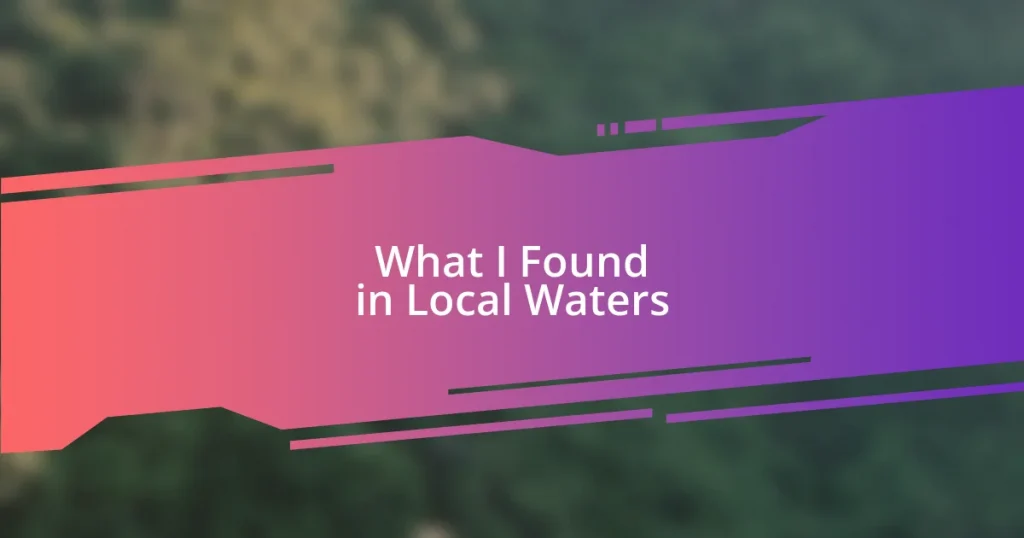Key takeaways:
- Choosing the right fly-fishing gear focuses on essentials: a good rod, a reliable reel, and the appropriate line, prioritizing durability and suitability for the target fish.
- Successful fishing locations depend on understanding fish behavior, water conditions, and seasonal changes, emphasizing the importance of patience and observation.
- Mastering casting and fly presentation enhances success rates, combining technique with an understanding of natural movement, while practicing catch and release fosters ecological responsibility.

Choosing the Right Gear
Selecting the right fly-fishing gear can feel overwhelming at first, but it doesn’t have to be. I remember when I started, I wandered bewildered through aisles of rods and reels, wondering how to even begin. What helped me was focusing on the basics: a good rod, a reliable reel, and the right line. These core pieces form the foundation of your experience on the water.
The weight of the rod often dictates what kind of fish I can target. For instance, when I first used a lighter rod for trout fishing, the sensitivity I felt was exhilarating—I could feel every nibble! Don’t you love that connection to nature? It’s like having a conversation with the river. Always consider the type of fish you’re after and the conditions you’ll face before committing to a rod.
When choosing a reel, I found it essential to think about durability over fancy features. During one fishing trip, my friend’s flashy reel failed right as we had a big catch on the line. That taught me a valuable lesson—practicality and reliability should be your primary focus. After all, nothing can ruin a peaceful day on the water faster than gear that doesn’t hold up.

Selecting the Best Fishing Locations
Selecting the best fishing locations truly enhances your fly-fishing experience. In my early days, I often opted for the most convenient spots along the river. However, as I honed my skills, I quickly learned that success hinges on understanding fish behavior and environmental conditions. For example, I found that early mornings in shallow waters near overhanging trees were ideal for catching trout—it’s where they feel most secure and, coincidentally, where I had some of my best catches.
When scouting locations, consider water flow and structure. I recall a day spent absolutely puzzled by a seemingly empty stretch of river. It turned out I needed to explore a mere 100 yards upstream where the water cascaded over rocks, creating the perfect habitat for fish. Each trip has taught me that patience pays off. I now take my time to observe and move, often chatting with local anglers who can offer insider tips on the best spots.
Lastly, don’t underestimate the influence of seasons and weather. I remember my first autumn fishing trip; the leaves turned vibrant shades of orange and red while the fish became notoriously elusive. Appropriately, the cooler months led me to deeper waters, where fish tend to hide. Not every trip will yield the same result, but each experience contributes to my understanding of how location interacts with time.
| Location Factor | Personal Experience |
|---|---|
| Water Flow | In my experience, fish are often concentrated where the water flows create eddies or pools. |
| Structure (Rocks, Trees) | I’ve seen significantly more action near fallen trees, giving fish a place to hide from predators. |

Learning Effective Casting Techniques
Learning to cast effectively was a game-changer in my fly-fishing journey. At first, I struggled with the mechanics—it felt like I was either overthinking or underestimating my movements. I vividly remember a particularly frustrating day at the river, where I spent more time untangling my line than actually casting. But then I discovered the importance of rhythm and timing. Once I started to relax and let the rod do most of the work, my accuracy improved dramatically. The thrill of seeing my fly land where I intended was incomparable.
To refine your casting skills, consider these techniques:
- Practice the Double Haul: This method helps you increase line speed and distance. I remember my first time attempting it; I felt like a pro when I successfully cast farther than I thought possible!
- Focus on Your Stance: A stable and balanced position is crucial. I often find myself adjusting my footing, especially when wading in the water, to maintain control during my casts.
- Use the Right Amount of Line: It’s tempting to let out too much line, but I learned that precision beats distance. A few effective casts often catch more fish than countless errant ones.
- Visualize Your Target: Before casting, I often take a moment to visualize my fly landing. This mental practice has significantly boosted my confidence and accuracy.
The beauty of casting is that it’s not just about technique; it’s about flow and feeling connected to nature. Each time I cast my line, I’m reminded of the soothing rhythm of the water. Every casting session turns into a chance not just to improve but to immerse myself in the moment. It’s like a meditation where the world fades away, and it’s just me and the river.
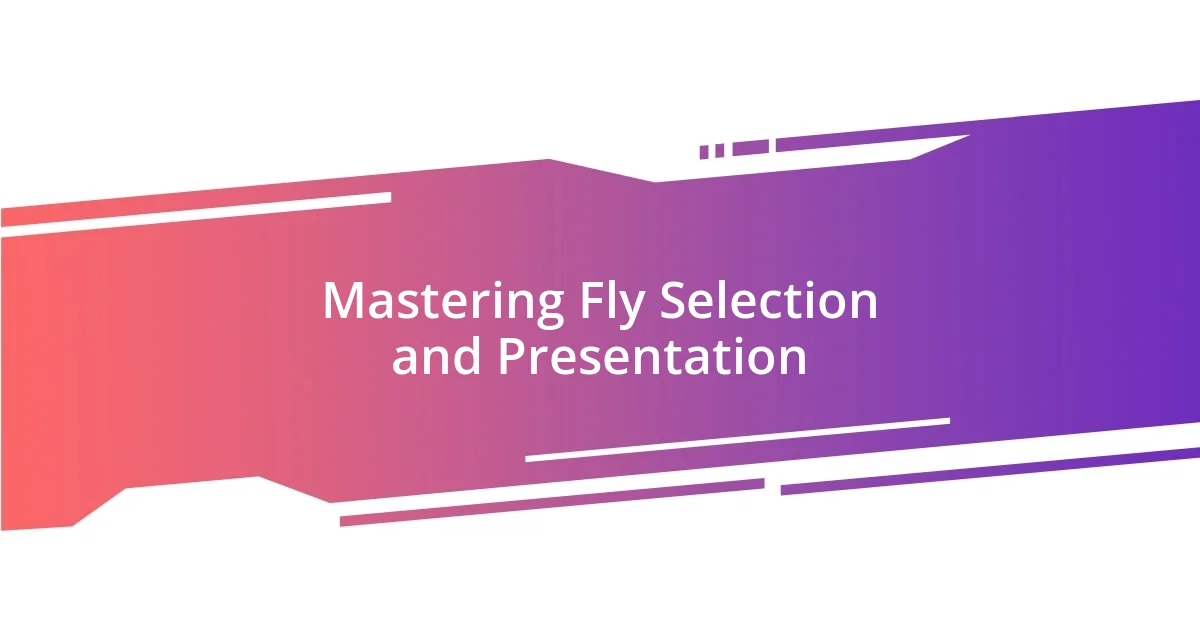
Mastering Fly Selection and Presentation
Mastering fly selection began with understanding not just what fish might want to eat but also the tiny intricacies of what I personally enjoyed about the experience. I remember the first time I chose a specific dry fly over a nymph, simply because it matched the hatch perfectly. Seeing trout rise to my fly made my heart race—there’s nothing quite like that moment of connection. It reinforced my belief that understanding the local insect life can dramatically increase success rates.
When it comes to presentation, I can’t stress enough how crucial it is to consider the current. There were times I’d cast out a fly without much thought, only to watch it drift awkwardly and fail to entice any fish. Then I had a light bulb moment: adjusting my retrieval speed to mimic the natural movement of prey made all the difference. One afternoon, I finally grasped the value of subtle twitches and pauses, and it was exhilarating to watch as fish began to respond enthusiastically. Have you ever felt that overwhelming thrill of seeing your strategy pay off?
Ultimately, perfecting fly selection and presentation requires a combination of knowledge and intuition developed through experience. I’ll never forget a day spent experimenting with different patterns—what began as a frustrating struggle turned into a thrilling dance between me and the river. By evening, I’d found a rhythm, successfully comparing how different flies performed in varied conditions. It was a clear reminder that mastering this art is both scientific and instinctual, and finding that balance is part of the joy of fly fishing.
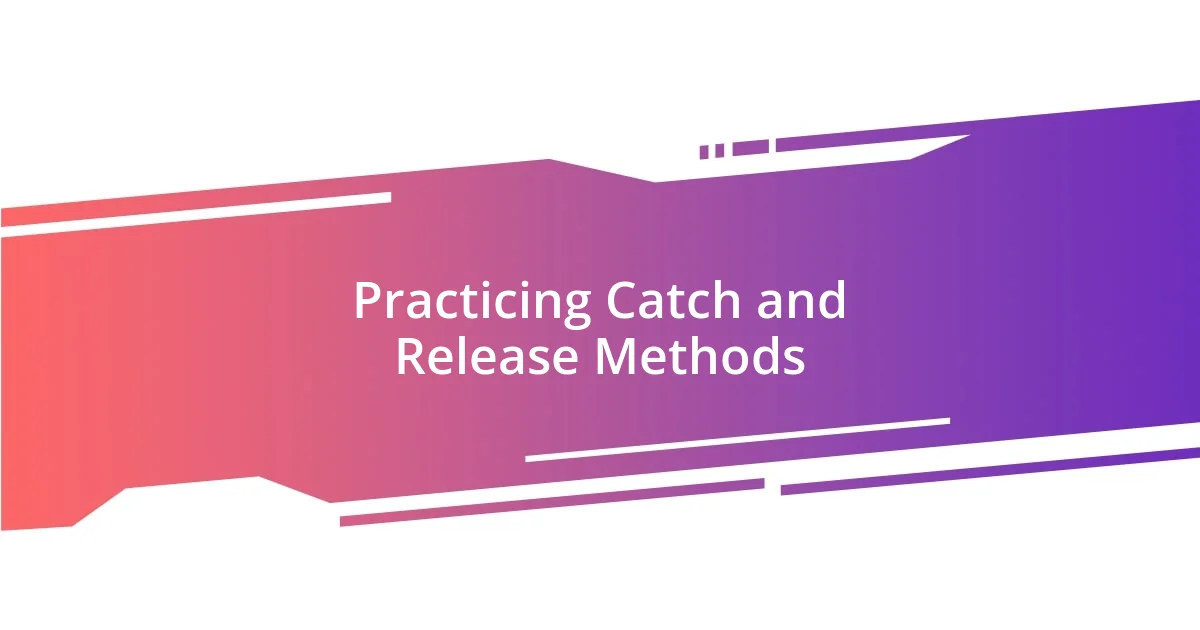
Practicing Catch and Release Methods
Practicing catch and release methods became a pivotal part of my fly-fishing experience. I remember the first time I caught a beautiful brook trout and felt a rush of excitement. But then I paused and thought about the impact on the ecosystem. Realizing I had a responsibility to protect these fish made me more mindful about the practice.
One technique I’ve found particularly useful is wetting my hands before handling fish. It seems simple, yet I noticed that this small action minimizes the damage to their protective slime coating. I can’t help but think back to the first fish I released. I gently cradled it in my hands, watched it regain its strength, and then let it drift away. That moment—seeing it swim free—was filled with a sense of peace and satisfaction that outweighs the thrill of bringing a fish home.
It’s important to be mindful of how we handle fish once we’ve caught them. Avoiding excessive handling and using barbless hooks are practical measures that I swear by. Have you ever considered the impact of your actions on future generations of anglers? Each fish we release is a chance for someone else to experience the same joy we did, and that realization made me appreciate the catch and release philosophy even more. It’s an act that fosters connection—not just to the fish, but to the environment and those who will come after us.




